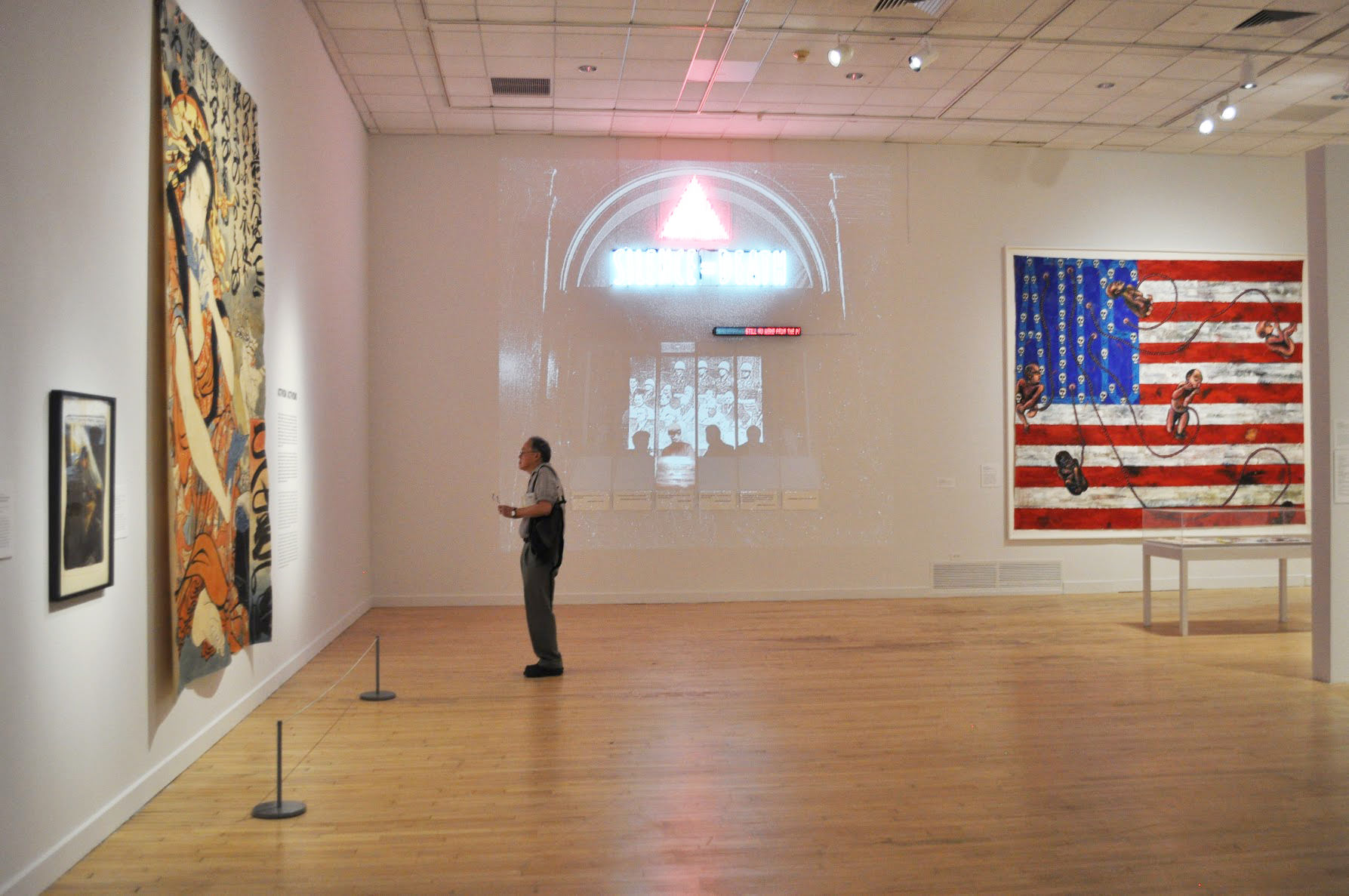
Photography by Conor Williams
Art AIDS America
The controversial exhibit stops at the Bronx Museum of the Arts
Since its debut at the Tacoma Art Museum in October of 2015, Art AIDS America, curated by Jonathan David Katz and Rock Hushka, has been met with enormous controversy. This backlash comes from the fact that the show, which showcases art that came out of the AIDS epidemic, features hardly any work from black artists. This is troubling, especially when you consider that while black people represent approximately 12% of the U.S. population, in 2010, they made up about 44% of new HIV infections. Right now in America, gay and bisexual black men, as well as trans women, are most at risk for HIV/AIDS.
To their credit, the curators of Art AIDS America have taken the criticism of white-washing seriously — as each future iteration of the show seemingly becomes more and more aware of race. At the Bronx Museum of the Arts, the show is designed so that this elephant in the room is one of the first things you see when entering the exhibit. “Tongues Untied” by Marlon Riggs is projected in the entryway to the main part of the exhibit. Riggs’ film — about the black gay community — is one of the first pieces to draw your attention, and it is a telling choice by the Bronx Museum of the Arts to screen it at the start. Understandably, they’d like to show it off. The film is compelling—filled with men reciting provocative, erotic poetry, and confronting the camera with an intensity found also in the footage Riggs uses of parades and lovemaking. But by projecting the film onto a wall, and making it more of an installation rather than a proper, separate screening with some chairs, the curators make the piece and the attention it deserves much more optional than some of the other pieces included in the show.
In a way, every art museum is also a history museum — showcasing culture and community from a certain moment in history. The Bronx Museum of the Arts does a good job of showing that AIDS has a history, but it is also something on a continuous timeline. AIDS is not yet a past-tense thing. One work by Felix Gonzalez-Torres simply consists of a stack of thin blue sheets of paper placed on the floor. On the sheets of paper are phrases paired with years. The stack is constantly replenished as people take copies, a never ending supply of memories. This piece and the act of participating in it mirrors the AIDS virus and its replication.



Self-portraits of Kia Labeija, titled “24”, show the artist in her home on her birthday — the creative intimacy of a young woman’s own space. The photos are simple, but affecting. Labeija herself lives with HIV, having been infected with it through her mother in-utero. Labeija’s mother died of AIDS in 2004. Defying the odds just by living and making her art, Labeija’s very existence is something of a statement
Art AIDS America emits a quiet sense of hope amidst the pain and anger. Some pieces left me in tears and brought back the shock and furor I get when thinking of Reagan’s inaction. But it left me thinking that the fight against AIDS must end within my lifetime. It decimated the queer populations before me, and now my generation hardly talks about it. That must change. It can only change if you take a long, hard look at this history, and this art, and feel moved to do something. You can start by going to see Art AIDS America. The show is immensely powerful, and will hopefully only get more diverse going forward.




At The Bronx Museum of the Arts, running now from July 13th to September 25th, 2016.